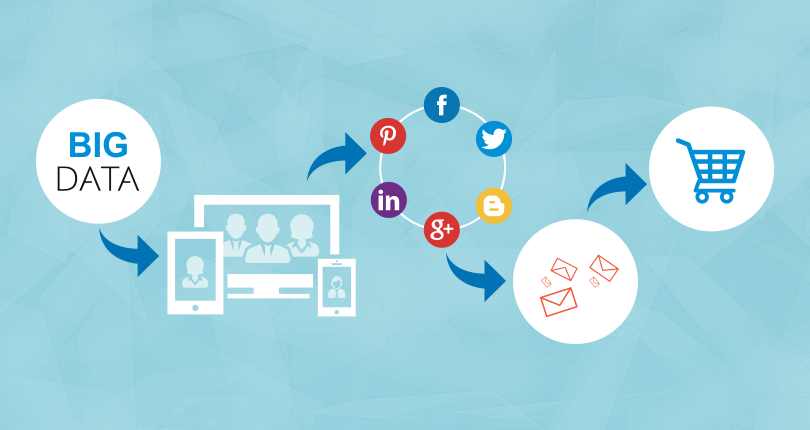The growing impact of mobile devices is no secret to marketers. A 2013 report from the Winterberry Group found that from 2012 to 2013 spend on mobile search marketing doubled, and the paid search advertising cost-per-click is now higher on tablets than desktops. Of course, another challenge is the consumer’s propensity to move from one platform to the next throughout the buying cycle. Consumers visit company websites, social media pages, catalogues, and brick-and-mortar stores while switching between multiple devices. With so many different options, it’s hard to predict consumer behavior or create a seamless marketing and buying process.
This is where big data is key. Successful multi-channel marketing requires integrated big data approaches. Collecting as much information from customers as possible will provide deeper insights into their behavior, allowing marketers to acquire a 360-degree view of the customer and thus improve their overall multichannel strategy. Organizations can learn if catalogue leads to in-store sales or if social media engagement predicts online purchases. Even further, they can learn which features people prefer and use that information to optimize their different channels.
In order to be successful, marketers must provide a seamless experience across all their channels. Those looking to improve their multi-channel approach could learn from a number of companies that are winning in this category.
Marks & Spencer
The major British retailer first entered the multi-channel space with the launch of its mobile site. It proved to be a quick success, with over a million views within the first three months and 13,000 orders in 90 days. M&S synced its mobile site with its traditional website, and further increased order sizes and revenue by enabling shoppers to log into their regular web account and complete transactions right from their mobile devices and vice versa. The retailer also integrated its online and in-store experience by offering Wi-Fi in all of its major outlets and giving iPads to all of its brick-and-mortar employees. While data plays an important role in allowing seamless integration between channels, a digital presence also creates data that the company uses to gain additional consumer insights from product demand to sentiment analysis.
PacSun
PacSun is a retail clothing brand that caters to youth culture. They were a multi-channel early adopter, being one of the first to offer an optimized mobile site with full -eCommerce functionality. PacSun launched its first iPhone app last year, which contains its entire online inventory available for purchase. The app also offers a number of other features that cater to its younger demographic, like outfit builders and QR scanners, which get codes from magazines, in-store displays, and other print ads. PacSun has also extended its multi-channel approach to its physical stores, deploying computer terminals that run touchscreen versions of its website. This allows PacSun sales associates to better serve customers by locating out-of-stock items online and ordering them right away.
New technologies have allowed companies to collect and analyze the data they need to create a streamlined customer experience that boosts sales and customer satisfaction. Each of these retailers realized a successful omnichannel strategy requires them to determine the key tasks or actions customers perform throughout the shopping experience. Once they understand this, they can begin simplifying the journey and improving the experience across multiple channels.
Multi-Channel Marketing
While retailers were the early adopters of, eCommerce, media companies, and a host of other industries can benefit from using big data analytics to adapt to a digital age. Learn more about how big data can drive data-driven e-Commerce.




